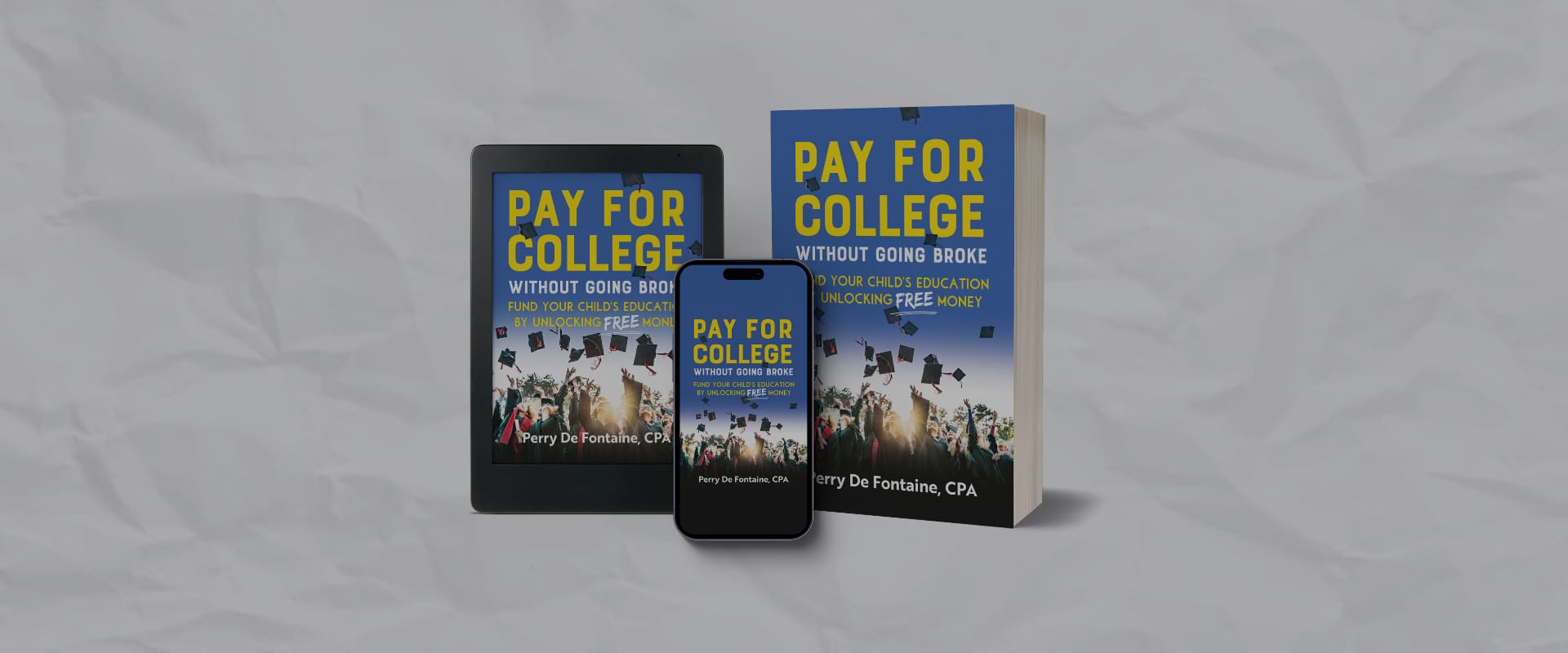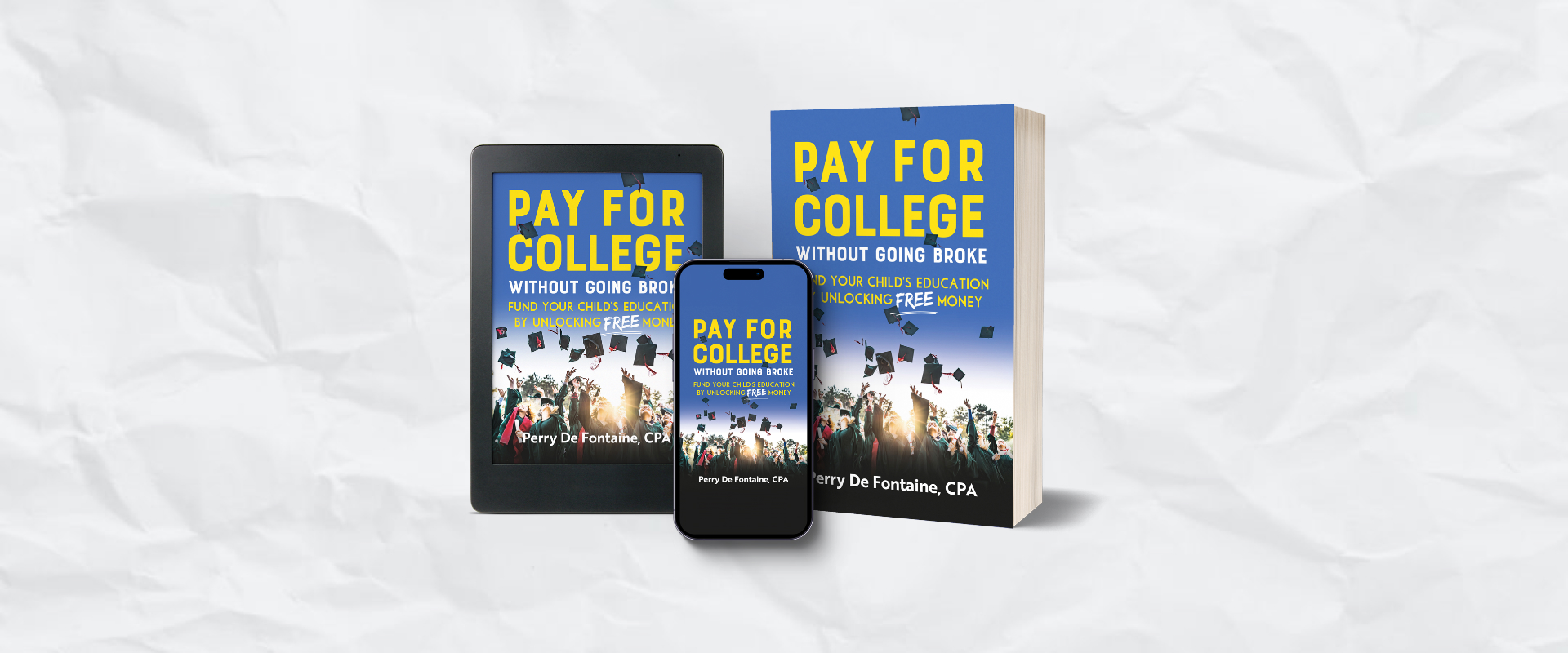College Costs
Did you know that four years at college can typically cost $100–300K per child, if not more?
It’s expensive, no matter where you go
I’m not just talking about tuition fees. There are books to buy, room and board to pay for, living expenses… as well as all those out-of-pocket overheads involved in living on campus, including basics such as toothpaste, laundry detergent—and let’s not forget the occasional pizza! All of this mounts up to a typical college cost over four years of $100–300K—and that’s just for one child.
Take a look at the following figures from 2021:

These are national averages, which means prices in individual states could be even higher:

It hasn’t taken long to establish that college education is expensive, no matter where your kid goes. But there’s more. What happens if you have more than one child with college ambitions? And let’s not forget that college costs keep going up. In the last twenty years, the average tuition and fee costs of four-year public schools have increased by 88%, and four-year private schools are up by 44%.
You also need to recognize that you are paying these college fees with “after-tax” dollars. This hypothetical example based on one child in college brings home this point:

Money for college bills will come from net after-tax dollars. To come up with, for example, $140,000 over four years for a public school ($35,000/year), you would have to earn $159,100 “pre-tax,” then pay federal taxes, in order to be left with $140,000 available to pay college bills. If you are in the 32% tax bracket, you need to earn $205,900 to come up with the same $140,000 after federal taxes. How many of you have that extra money available after paying all of your regular bills? I thought so. This brings home the fact that, for the vast majority, your income alone will not fund your kids’ college bills.
Options for paying college fees
Savings
How many of you have saved all that money? Don’t feel bad; you are not alone. Did you know that almost 35% of all parents are not saving for college in any way, and those that have, only saved an average of about $18K?
Borrowing
How much do you think you can borrow, and from where? Do you borrow against your home (refinance or get a home equity loan/line) or beg the bank for a personal loan? Do you pile it onto credit cards? Are there student or college loans?
How many of you are even willing to borrow that kind of money?
Scholarships
Do you think there are enough college merit scholarships or private scholarships out there to cover these costs?
Sadly, most people get scared off by college sticker prices and simply do not believe they can afford college. They tend to either:
- Go for the cheapest option they can find—what I call “going the hard way” (like I did). Typically, that means living at home and commuting somewhere locally.
- Or, worse still, they don’t go to college at all.
I am here to tell you, right now, that neither of these options is right for any child that wants to go to college. A college education is an investment in your child’s future and is attainable. It should be on your radar. The key is learning how to access free (other people’s) money. Wouldn’t it be at least worth keeping the door open by learning what is possible?
Is College Worth It?
Did you know a college education statistically improves quality of life?
Investing in the future
Because of the costs, especially in recent years, many families are questioning the value of a college education. Is attaining higher education worth it?
Unequivocally, the answer is “yes.” College is an investment in your child’s future, not simply an expense.
Not convinced? Check out these numbers, which indicate earning potential based on education and qualifications:

In addition to the economic return on investment (ROI), college grads typically provide more benefits to society (public benefit). For example, college grads:
- Pay more in taxes
- Need less public support
- Volunteer and vote more
- Are healthier and smoke less7
Assuming you agree college is an investment and is worth it, wouldn’t it be great if we could get lots of free money and make it less costly?
My personal college journey
I want to tell you about my situation in high school. Based on costs, four-year colleges were out of the picture. I figured my only opportunity was to live at home and commute to a community/county two-year college. It was only years later I came to realize that this was going the hard way.
I lived in a portion of New Jersey (NJ) where, at the time, the closest community college was twenty-five miles away. I had no car, and where I lived (the early 1970s version of Jersey Shore), jobs for kids were scarce. My means of transportation at the time was hitchhiking.
Through research, I discovered that because I was born in California (Los Angeles), if I returned before I turned eighteen, I could get a four-year public college tuition for free. That just left me with finding somewhere to live.
My parents divorced when I was young, and my mom eventually moved me and my siblings back to NJ where she had family. At the time, I was twelve years old.
My father remained in California, so I moved in with him at the age of seventeen. This wasn’t easy. He had remarried and had a two-year-old son. The deal was I could live there, but I had to pay rent and pay for everything else on my own. The good news was there were lots of jobs available locally. I applied to the closest four-year college to where my father lived, was accepted, and was on a plane to California a week after my NJ high school graduation.
My college decision was based solely on sticker price and the practical options available to me. If I had not been presented with this California opportunity, I highly doubt I would have stuck with the NJ county college option; in fact, none of my high school friends that were in similar financial situations and tried that route ever finished college. I was fortunate to have another option.
A life-changing turning point
My California option had a number of challenges. In terms of work, my jobs included delivering the Los Angeles Times seven mornings a week, plus working a graveyard shift at a local gas station. Once college started, I realized I was attending a school where I did not feel challenged. It was not the right school for me.
On the plus side, I started meeting other students, including those who lived in the dorms on campus. When they discovered I was working these jobs and commuting, they wondered why. My short answer was: “How else can I pay the college bills, plus food and board?” Some had parents that could pay the bills, but many others with no money like me said they were receiving financial aid—including lots of free money! Hard as it is to believe now, at the time I had never heard of such “financial aid.”
The impact of that knowledge was life changing. Because of what I discovered, two years later I transferred to a prestigious school in NJ, received lots of free financial aid, lived on campus, and graduated.
Prepare to be surprised
Not only do few people accumulate sufficient dollars dedicated to college funds, most believe they earn too much to be eligible for financial aid. Also—and I’ll keep stressing this throughout this blog and related posts—you can get other people’s money to pay for college! No matter what your financial situation is, you can get thousands—even tens of thousands—in free money per year.
Did you know that private schools with the big, scary sticker prices can be less expensive than cheaper in-state public schools? Surprised? I thought you might be. Take a look at a few other facts; at least some of which, I guarantee, will be news to you:
- 22% of US households have kids under 18 (73 million);8 and of 2.7 million high school graduates in 2021, about 62% attend college (43% go to four-year schools; 19% attend two-year schools).
- Most people that start college go the hard way (living at home and commuting), yet the best chance for college success is living on campus at your four-year right school.
- The key is to find the right school for your unique situation—solve your unique matrix.
- Most free money for college comes from the colleges themselves, not from the government or private scholarships.
- Sticker prices don’t matter—what matters is true cost (after free financial aid). Bear in mind that some schools have more money than others.
- 82% of kids attending private schools receive at least some free financial aid. Plus, the average discount is 33% off the total price.
- Colleges are the gatekeepers to the vast majority of financial aid (including college loans). To get access, you must ask for it (by completing financial aid forms). Most parents think the Free Application for Federal Student Aid (FAFSA)is the only financial aid form needed, but the majority of the schools with the most free money require more financial aid forms than just the FAFSA.
- The more free money you get, the less you have to pay and/or borrow. More free money for undergrad saves more for grad school, more free money for your other kids, and more free money for you and your retirement.
Competition for college admissions is increasing
How do you get into your college of choice? Competition is fierce and getting worse. For example:
- Many of our top schools (the top 50–60) have acceptance rates of less than 10%, with some less than 5%.
- These rates have trended downward from when I started twenty years ago. The Harvard admittance rate was 9.8% in 2007 and 3.4% in 2023; Columbia was 12.0% in 2007 and 3.9% in 2023; Duke was 21.0% in 2007 and 6.0% in 2023. Even public schools are getting more competitive—The University of Michigan had a 50.3% admittance rate in 2007 and only 17.7% in 2022.
This trend will generally continue, and I expect even more competition going forward. Why? Kids are applying to more schools than before. Because many have gone “SAT optional” (as a result of COVID19), students are not worried about test scores and are applying to more “reach” (where it’s harder to get accepted) schools. Further, our population is growing in pure numbers, but the number of colleges and universities have essentially stayed flat.
Do not get discouraged. There are many, many great schools out there—and better yet, with lots of free money.
When to start the college application process
You might think that the fall of senior year in high school is the right time to start the college application process. Sadly, that’s when too many do start. Did you know, many college application deadlines are in the fall of senior year? Most are due by January 1 of senior year, even though they don’t start school until the following September.
The earlier you start, the more leisurely and less stressful the process will be. The worst thing that can happen is you wait until it’s too late to maximize your opportunities for college success.
It’s never too early to start planning for your child’s college future. This is particularly true on the financial side; however, don’t overlook your child’s role in making college more affordable. Making the right high school class choices, setting grade goals, and developing good study habits and writing skills can all be worked on, starting in freshman year in high school. Also, thinking seriously about your child’s free time and if they are making productive use of it with extracurricular activities is something the more selective colleges focus on. I am a big believer of children identifying a passion or two and making something of it; after all, they should enjoy what they are doing.
What about college-specific activities? If you start focusing on college lists, visits, and SAT/ACT test prep by the fall of high school junior year, you will be fine. Some start earlier, but we say there are enough important things to focus on in high school to keep them busy. As I’ve said, many families wait until the fall of senior year to begin the laundry list of activities needed to be completed, thus creating a lot of stress at home and potentially missed deadlines.
Because of the many hurdles and lack of information, as well as a lack of clarity on when to begin the process, parents are starting to question whether college is worth it. As a result, some kids are simply not pursuing college, which is a troubling trend.
So, is college worth it? From higher earning potential to better health and a greater contribution to society, the answer is an unequivocal “yes”!



